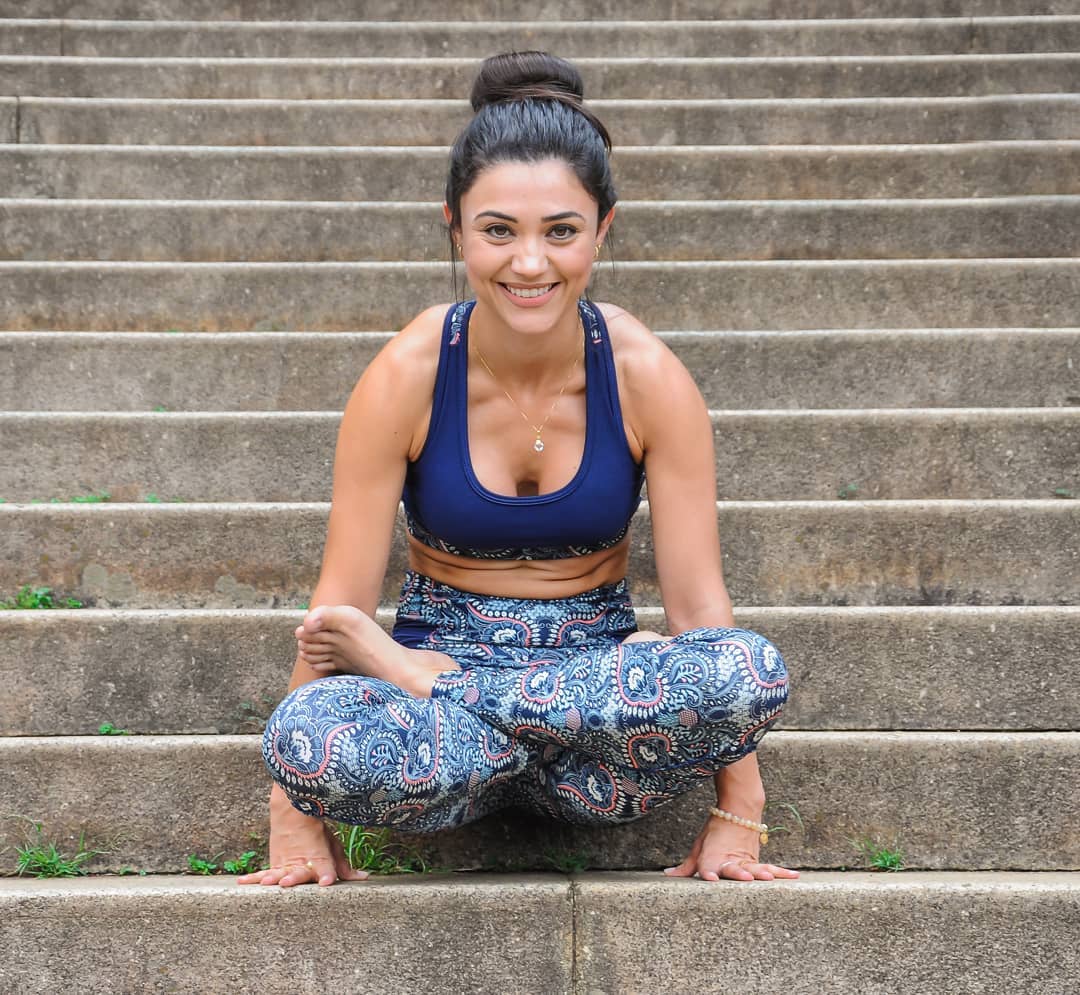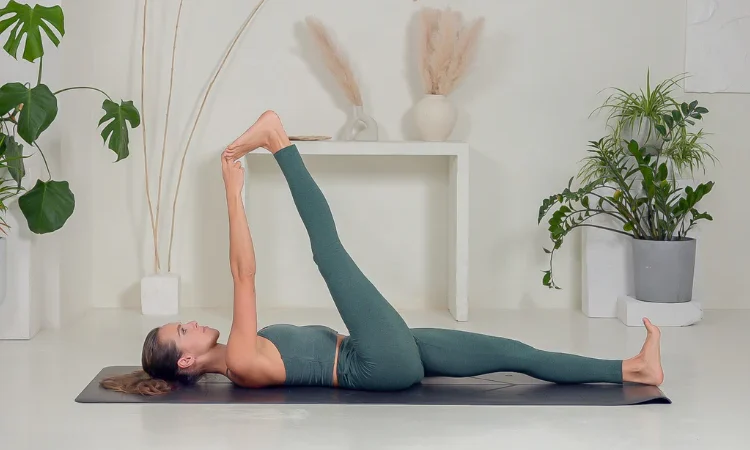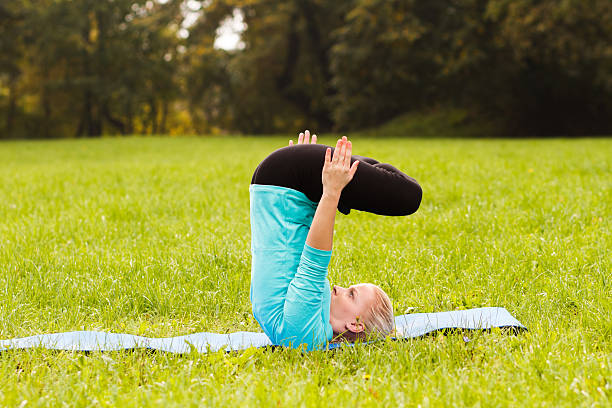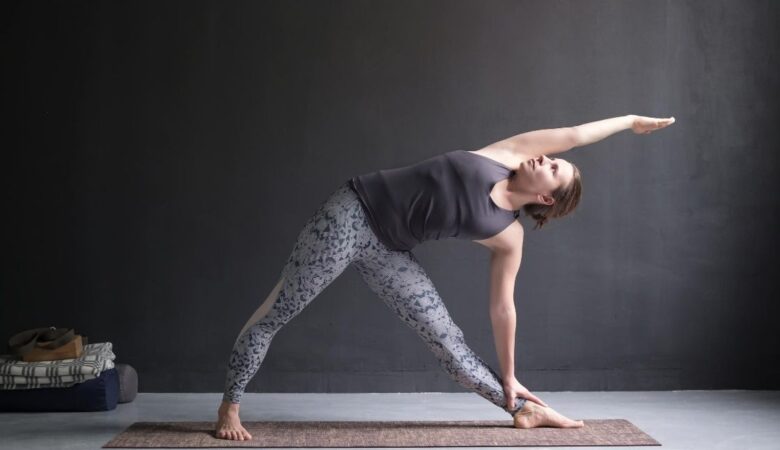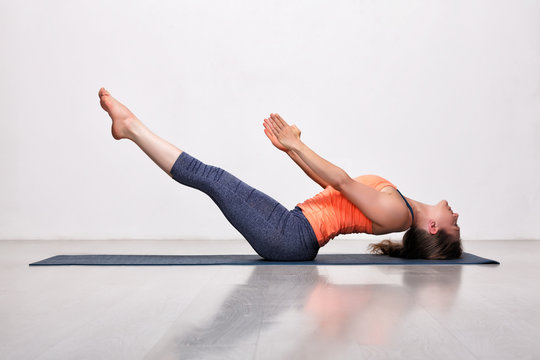Sanskrit Name: Utthita Padmasana or Tulasana/Tolasana (उत्थित पद्मासन/तुलासन)
English Name: Raised Lotus Pose or Balance Pose or Swing Pose or Scale Pose
Type of Yoga: Hatha Yoga
Level of Yoga: Advanced / Intermediate
Duration: As per your capability or 30 to 60 seconds
Target Area: Hamstrings, Thighs, Arms
Strengthens: Shoulders, Wrists, Arms, Abdomen, Back, Hips
The Utthita Padmasana or Tulasana/Tolasana is such a posture that has a handful number of benefits on our health. When the man does this asana, then he takes all the burden of his body on the palms of his hands. You should do this posture as long as your body can do it. Do not forcefully try to lift your body.
Table of Contents
What Does It Mean By Utthita Padmasana or Tulasana/Tolasana?
Utthita Padmasana is composed of three Sanskrit language words.
Where the first word is “Utthita (उत्थित)”, which means “Raised”
The second word is “Padma (पद्म)”, which means “Lotus”
And the third word is “Asana (आसन)”, which means “Yoga Pose”
Utthita Padmasana, alternatively known as Tulasana or Tolasana in Sanskrit, translates to “Balance Pose” or “Scale Pose.” In English, it is referred to as the “Raised Lotus Pose.” Below, we will explore the steps, benefits, precautions, and more associated with Utthita Padmasana in this article.
Preparatory Poses of Utthita Padmasana or Tulasana/Tolasana
- Padmasana (पद्मासन) or Lotus Pose
- Matsyasana (मत्स्यासन) or Fish Pose
- Ardha Matsyendrasana (अर्ध मत्स्येन्द्रासन) Or Half Lord Of The Fishes Pose, Half Spinal Twist Pose
- Shirshasana (शीर्षासन) or Headstand
- Janushirshasana (जानुशीर्षासन) or Head-to-Knee Pose
- Balasana (बालासन) or Child’s Pose
- Baddha Padmasana (बद्ध पद्मासन) or Bounded Lotus Pose
- Baddha Konasana (बद्ध कोणासन) or Bound Angle Pose or Butterfly Pose
- Virasana (वीरासन) or Hero Pose
- Garudasana (गरुड़ासन) or Eagle Pose
Method of doing Utthita Padmasana or Tulasana/Tolasana
- At first, sit in Dandasana or Staff Pose
- Inhaling, Lengthen your spinal cord and press the ground with your hands
- Take the breath in lift your right leg and bring the right foot on the left thigh
- And then do the same with the other leg
- You are now in Padmasana or Lotus Pose.
- Turn both hands back on the ground, and press the ground to lift the body up
- The body and your hands should be parallel
- Now you are in the posture of Utthita Padmasana or Tulasana/Tolasana.
- Stay in this posture as long as possible
- It is difficult to stay up late, so do as much as you can, with the help of time you can stay in this asana for up to 60 seconds (do not exceed 90 seconds)
Beginner’s Tips:
If you are not able to lift yourself above the ground then you can keep your feet on the ground and only raise the hips
In case you are still troubled then you can keep Yoga blocks under your hands
If you are getting up, but not for a long time, then take a break and take your hips back and then again raise it. By doing this, the asana becomes a little easier.
Follow-Up Poses of Utthita Padmasana or Tulasana/Tolasana
- Kukkutasana (कुक्कुटासन) or Cockerel Pose, or Rooster Posture
- Shavasana (शवासन) or Corpse Pose
Precautions to Utthita Padmasana or Tulasana/Tolasana
Those who have knee injury in their knees or wounds, should not do this asana
If there is an injury in your wrists, do not do it
Do not do this asana if you have pain in the shoulders or you got hurt
If you have pain in your hips and thighs then do not practice this asana
Don’t put too much emphasis on your physical capacity
Benefits of Utthita Padmasana or Tulasana/Tolasana
- With regular practice, your arms, palms, and wrists all become stronger
- The practice of Utthita Padmasana or Tulasana/Tolasana is also helpful in reducing stomach fat. This is a good Yoga to Reduce Belly Fat.
- It makes the balance in your body
- It’s also helpful in removing knee pain
- This yoga pose keeps your digestive system working, those people who have constipation problems should do this posture
- It strengthens the vertebrae bones, causing the muscles of the body to be flexible
- Swing Pose relieves stress and keeps the mind calm
- If for some reason you have swelling, tightness, or light pain, then you get relief from doing this posture regularly
FAQ:
Q. What Are The Benefits Of Utthita Padmasana?
A. Utthita Padmasana fills in as a solid and quiet posture which can require some time on your part to get right. It is significant that you free your psyche everything being equal and keep up internal quietness.
Q. Who Should Not Do Utthita Padmasana?
A. In the event that you have a shoulder or wrist injury, you should not play out this asana. It is additionally better to stay away from this asana on the off chance that you are experiencing any sort of knee or lower leg wounds. Individuals having tight hips or thighs ought not to perform Utthita Padmasana.
Q. How Long One Can Sit In Utthita Padmasana?
A. Take the same number of squares or covers as you need under your hips to have the option to sit in the stance for 5-10 minutes outside of your training. After some time you can diminish the stature of the covers as the thighs extend and unwind.
Q. What Are The Steps Of Utthita Padmasana?
A. Toward the early phases, you may feel some distress and trouble getting into this posture in the correct way. So, see here for more about the steps of Utthita Padmasana.

